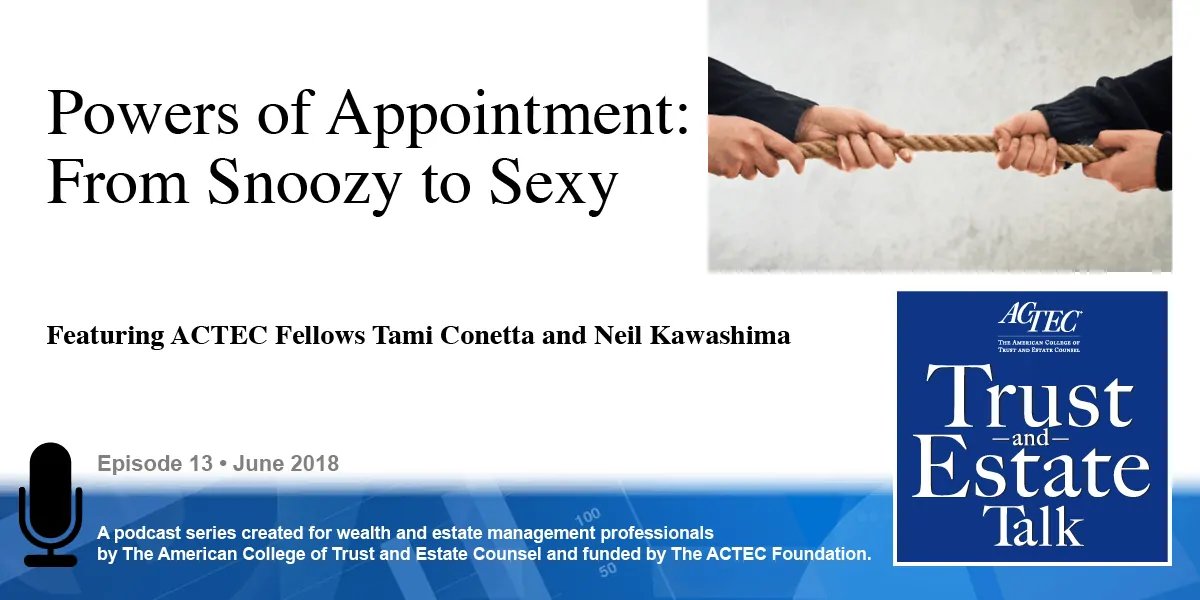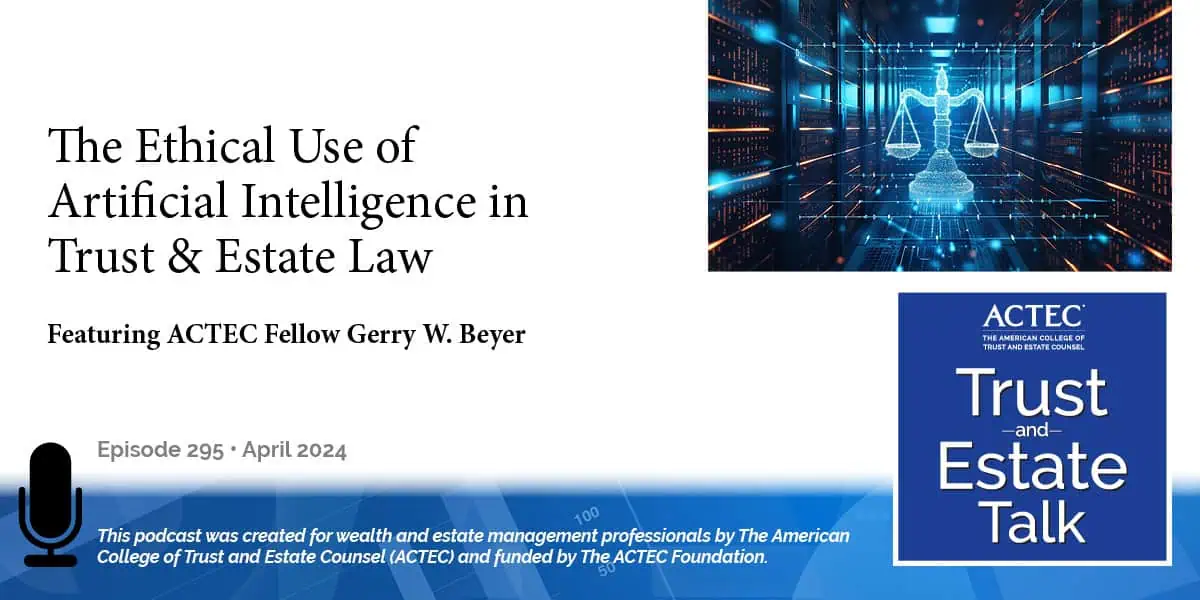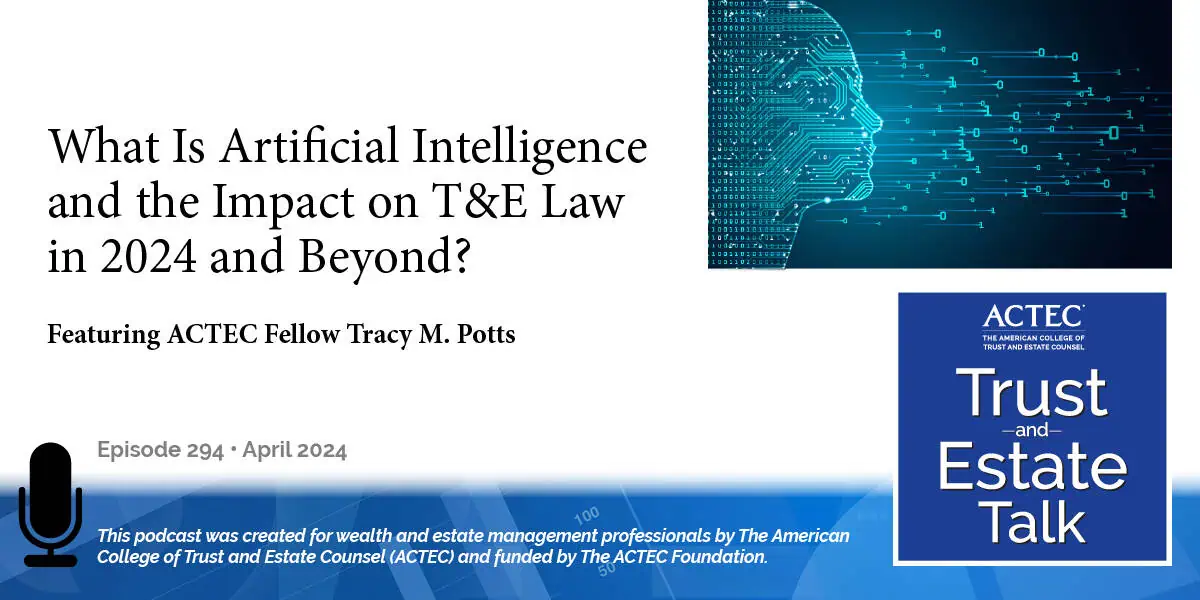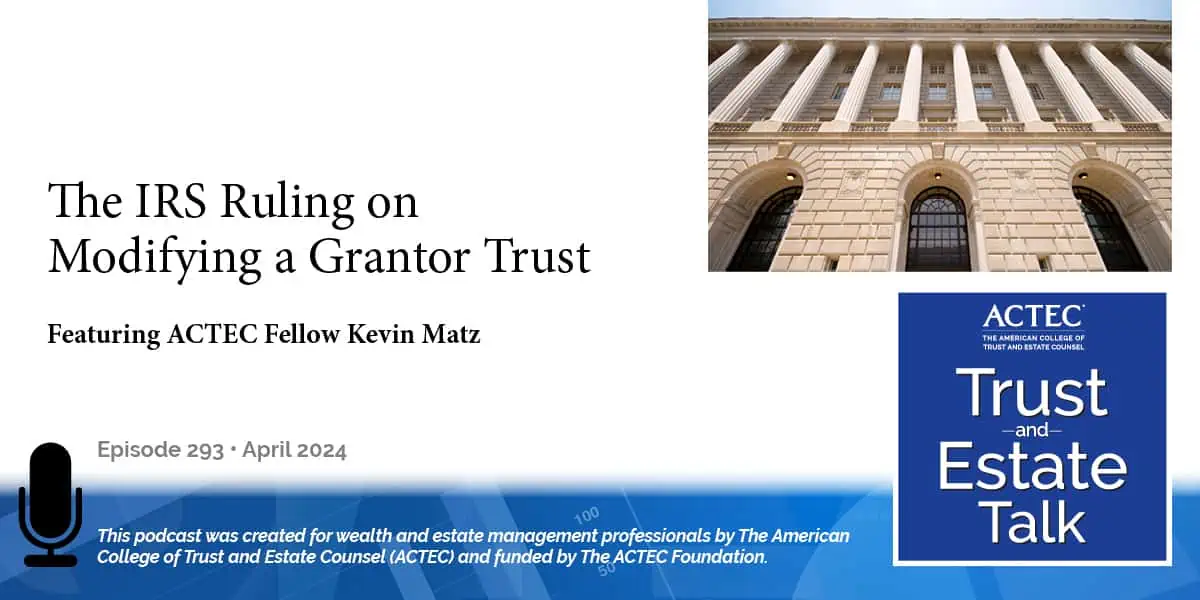Powers of Appointment: From Snoozy to Sexy

Transcript/Show Notes
This is Karen Gerstner, ACTEC Fellow from Houston, Texas. Recent times have seen resurgent interest in powers of appointment. We use them to keep long-term, dynastic trusts evergreen; to be responsive to changing family, tax, and economic landscapes; and to transform old, tired assets into assets with new, exciting income tax basis. To learn more about this topic you will be hearing today from ACTEC Fellows Tami Conetta of Sarasota, Florida and Neil Kawashima of Chicago. Welcome, Neil and Tami.
Thank you, Karen. Credit shelter trusts and lifetime gift trusts have always been good planning techniques to take advantage of the applicable exclusion amount at the oldest generation. These trusts are designed to avoid estate tax inclusion, often from multiple generations. But with the current estate tax exclusion amount over $11 million, many beneficiaries in successive generations will not have a taxable estate at their death. This creates an opportunity to leverage their unused exemption amount. Estate-planning professionals are looking at older trusts to find these opportunities to create estate tax inclusion that can address both income and transfer tax issues. For example, a trust with significant low-basis assets could get a stepped-up basis of the current beneficiary’s death if the assets are in their taxable estate, or the beneficiary’s generation-skipping tax exemption could be applied to a trust that is currently not exempt to avoid a taxable termination.
If structured carefully, these benefits can be realized without generating any tax consequences. Of course, the simplest path to estate tax inclusion is to distribute the trust assets outright to the beneficiary, but that option is not always the best option. Once in the hands of the beneficiary, those assets become subject to the claims of their creditors, could be lost in a divorce, or could simply be spent away. In either event, the intended remainder beneficiaries will not be happy. Neil, is there another option for us to consider?
Yes, there is. A better alternative is to create a general power of appointment in the beneficiary. For existing trusts, it may be necessary to decant the trust into another trust or seek a judicial or non-judicial modification to add the general power of appointment. When drafting new trusts, you should consider whether to include an optional general power of appointment, and by optional, I mean a general power that is triggered or turned on either by some defined event or person. An optional general power of appointment can be defined by a fairly straight-forward formula: the power to appoint a portion of the trust assets that doesn’t exceed the power holder’s available estate tax exclusion amount when combined with his other taxable assets or his available generation-skipping tax exemption amount, for example. Or you can take a wait-and-see approach and name a trust protector who can grant a general power to a beneficiary when the circumstances are appropriate. Tami, what are some considerations you have when adding a general power of appointment?
Well, Neil, for me, the first consideration is to have a clear understanding of the family dynamics. You don’t want to add a general power of appointment to accomplish some tax benefit only to have the power exercised in a way that disrupts the entire estate plan.
Couldn’t you prevent that from happening by requiring a third party to approve how it’s being exercised?
Yes, you can include a provision requiring a disinterested third person to consent to the exercise for it to be effective. A trust protector is always a good option for that. A trustee, on the other hand, is not a good option because their fiduciary duties to the remainder beneficiaries would make it almost impossible to gain their consent, and then the power could be deemed elusory by the IRS.
Tami, what if you limit the general power of appointment to creditors of the power holder’s estate?
Well, that could definitely narrow the potential appointees and lower the risk of an unintended exercise. And it is sufficient to create a general power for tax purposes, but I’m not convinced that it avoids the problem completely. If I’m the power holder, and I want to get the assets to someone other than a presumptive remainder beneficiary, couldn’t I make that person my creditor? Perhaps give them promissory note payable at my death? I would also be concerned that in some states, just having a general power exercisable in favor of the creditors of my estate may give those creditors a demand right on the assets, subject to the power.
The second consideration I have is when and how to turn on the general power of appointment. Neil, how do you think about flipping that switch?
If you use a straight formula provision in the document, then you don’t have to worry about the springing aspects. But if you want to have more flexibility, then giving a trust protector the ability to turn it on or off is a good option. You just need to be careful that the trust protector is not a potential beneficiary. You also do not want to put the trustee in the position of turning the general power on for the same reasons you don’t want to have them consent. The trustee is unlikely to take an action that could be detrimental to the interests of the other beneficiaries.
Neil, I really like the flexibility of having a trust protector who can add or remove a general power. It lets them consider other possible implications beyond just a stepped-up basis on or a GST allocation. Depending on market conditions, the intended step-up could even be more of a step down, and a formula provision could limit exercise to just assets that could have a capital gain, but it does seem easier to simply have the ability to turn the power off in that instance.
It might be easier, but there’s always the risk that the trust protector doesn’t remember to turn it on or off. That assumes the trust protector knows she has that power, so the starting point is letting the protector know of her role. Then there needs to be close coordination with the trustee, the trust protector, the attorney, and the beneficiary, so that all relevant factors are taken into consideration and monitored, such as changes in the federal tax laws and the impact of state tax laws. The attorney should somehow flag this to all parties so there is less chance this will be overlooked. In addition to these practicalities, changes in law obviously could have a big impact on this type of planning. For instance, if the current estate tax exemption falls back to $5 million in 2026 as it is scheduled to do, flexibility will be critical.
That’s very true, Neil. Causing estate tax inclusion seems pretty straightforward, but you really need to be alert to the risks that come with relying on people to do the right thing and changes in the tax environment. This still appears to be a good opportunity though in the current tax environment, so I expect we’ll be seeing a number of powers of appointment coming our way in the next few years.
Thank you, Tami and Neil for teaching us more about powers of appointment.
If you have ideas for a future ACTEC Trust & Estate Talk topics, please contact us at ACTECpodcast@ACTEC.org.
Latest ACTEC Trust and Estate Talk Podcasts

The Ethical Use of Artificial Intelligence in Trust & Estate Law
A law professor offers insights into the risks, rewards, duties and ethical considerations of lawyers using AI in their T&E practices.

What Is Artificial Intelligence and the Impact on T&E Law in 2024 and Beyond?
A primer on the types and uses of AI, then a deeper dive into the impact on trust and estate law from types to applications to ethical considerations.

The IRS Ruling on Modifying a Grantor Trust
Explore the gift tax implications for trust beneficiaries modifying grantor trusts in IRS CCA 202352018, with nuanced analysis and estate planning insights.

